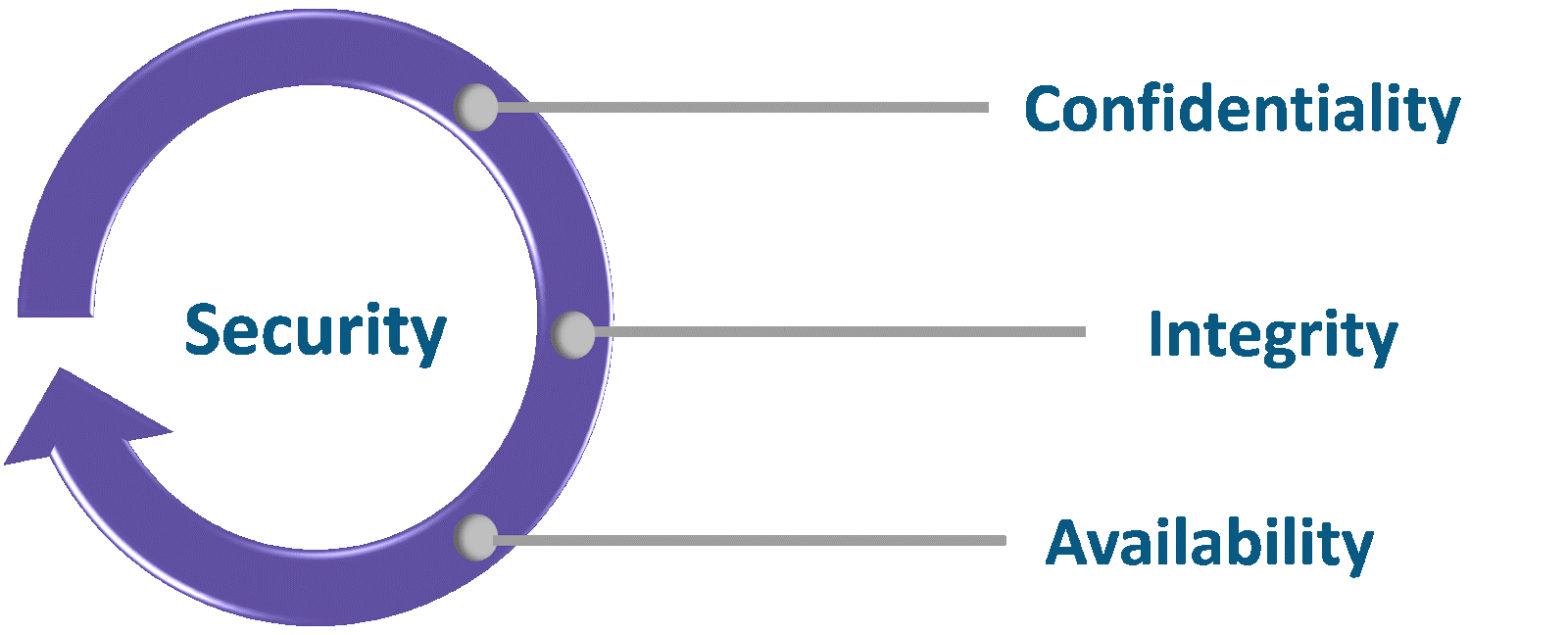In recent years, the internet has proven to be an important element of almost everyone’s life because of the continuously increasing request for connectivity and inter-human communications, and due to this, tremendous growth has been seen in the development of the internet and the need for network security firewall has increased. A lot of individuals are working on internet technology to provide internet speed as fast as possible.
Initially, the Internet was used to connect Universities, and for that, expensive circuit switching methods were used. With the gradual breakthroughs in the networking protocols as well as physical technologies, it is now widely available to home users too.
Though computer interconnections provide a way for quick communication, sharing information, and having access to any website in the world, it has also enabled some shady and unwanted characters to enter into the users’ systems to steal useful and important information.
Because of this, security devices have been introduced into the network systems to keep intruders away from performing any unethical practices. Despite whether a site or a network has classified information or not, someone may do some malevolent act to harm the system. Therefore, taking a small step in advance to protect the system from the malevolent act may save a lot of the time that needs to be spent to repair damages that occurred due to such malevolent activities. To learn more, you can take up a free online network security course and upskill today.
There are some ways to make the defence system of the Internet network system strong, like using bastion-host, setting up a perimeter network, or using a firewall. The real fact is that these methods don’t provide complete security solutions as each has some flaws in it. However, using a combination of these gives some fruitful results.
- History Of Firewall
- What is Firewall?
- How does a Firewall Work?
- Types Of Firewalls
- Advantages Of Using Firewalls
- Disadvantages Of Using Firewalls
- 5 Firewall Features You Must Have
- 8 Firewall Best Practices
- Firewall Management
- Conclusion
- FAQs
History Of Firewall
The invention and development of the network security firewall can be seen as an ongoing process because it is constantly evolving. Let’s understand this as follows:
The late 1980s
Brian Reid, Paul Vixie, and Jeff Mogul, each played an important role in developing packet-filtering technology at Digital Equipment Corp (DEC) that contributed a lot to the development of future firewalls.
The late 80s to early 90s
The early idea of the circuit-level gateway firewall was created by many employees at AT&T Bell Labs, including David Presotto, Janardan Sharma, Kshitiji Nigam, William Cheswick, and Steven Bellovin.
From 1989 to 1990, Sharma, Presotto, and Nigam collaborated on the development of the circuit-level gateway, which was followed in 1991 by Cheswick and Bellovin’s work on firewall technology.
1991 to 1992
Marcus Ranum invented the security proxies at DEC, and this became a vital component of the first application-layer firewall product. This is considered an expansion of Reid, Vixie, and Mogul’s work at DEC, and it was released as the first commercial firewall.
1993 to 1994
The first widely-adopted, user-friendly firewall product—Firewall-1, was developed by the company’s founder Gil Shwed and a prolific developer Nir Zuk.
In 1993, Gil Shwed created stateful inspection and applied for a U.S. patent for it.
Nir Zuk worked on an easy-to-use graphical interface for 1994’s Firewall-1 that resulted in the wider adoption of firewalls into businesses and homes for the foreseeable future.
The firewall product that we see today was made possible because of the tireless efforts paid by all of them for the development of firewall at regular intervals.
Take a leap into a secure future! Enroll in the best Cyber Security PG Program in India. Gain expertise through hands-on labs, key concepts, and capstone projects. Secure your spot now!
Packet filtering firewalls are still used today. Firewalls have traveled a long way with continuous development in their technology. Let’s have a look at its journey:
Versions
Gen 1 Virus
Generation 1 was released in the late 1980s to protect stand-alone PCs from the virus attacks that were affecting all businesses at that time.
Gen 2 Networks
Generation 2 was introduced in the mid-1990s to protect all businesses from Internet attacks.
Gen 3 Applications
Generation 3 was released in the early 2000s. This is also called an Intrusion Prevention Systems Products (IPS). At that time, due to vulnerabilities in applications, most businesses were affected by the unethical act, so this generation was brought into existence to protect them.
Gen 4 Payload
Generation 4 was released around 2010 as anti-bot and sandboxing products to protect most businesses that were affected by targeted, unknown, evasive, and polymorphic cyber attacks at that time.
Gen 5 Mega
Generation 5 was released around 2017 to provide advanced threat prevention solutions to the businesses that were facing multi-vector and mega attacks problems at a large scale in which advanced attack tools were also used.
What is Firewall?
A Firewall can be defined as a network security device whose function is to monitor and filter incoming and outgoing network traffic based on the predefined security policies established by an organization to protect it from any unethical practices. A firewall acts as a barrier between a private internal network and the public Internet. The main purpose of using a network security firewall in the network system is to allow non-threatening traffic in and to keep dangerous traffic out of the network.
Check out this firewall course by Great Learning Academy to learn more.
How does a Network Security Firewall Work?
The main function of a network security firewall is to allow the safest network traffic to the network and to do so, it filters the good and trusted traffic from the whole traffic and doesn’t allow the bad and untrusted traffic to travel through the network. Before knowing how a network security firewall operates to filter the network traffic, it is important to understand the structure of web-based networks first.
Firewalls are intended to secure the network hosts like private networks and the endpoint devices within the network.
Network hosts are mainly devices that are used to “talk” with other hosts on the same network.
Their function is to send and receive communication between internal networks, as well as outbound and inbound between external networks.
The networks provide access to the Internet to the computers and other endpoint devices and also help to establish communication with each other.
The internet is segmented into sub-networks or ‘subnets’ for security and privacy purposes.
Also Read: How to Start a Cyber Security Career in 2023?
The basic subnet segments of the Internet are explained below:
1. External Public Networks
It is referred to as the public/global internet or various extranets.
2. Internal Private Network
It is also known as a home network, corporate intranets, and other “closed” networks.
3. Perimeter Networks
It is a type of detailed border network made of bastion hosts, which means computer hosts dedicated to tough security that can endure an external attack. It acts as a secured buffer between internal and external networks and can also be used to house any external-facing services provided by the internal network like web servers, mail, FTP, VoIP, etc. These are considered more secure than external networks but less secure than internal networks. These are mainly used in organizational or national intranets, not in simpler networks like home networks.
4. Screening Routers
To segment a network, screening routers, also known as specialized gateway computers, are placed on the network. They are called house firewalls on the network level. The screened host firewall and the screened subnet firewall are the two most common segment models.
- Screened Host Firewalls: It uses a single screening router between the external and internal networks that are known as the choke router. These networks are called the two subnets of this model.
- Screened Subnet Firewalls: In these two screening routers are used, one is an access router that functions between the external and perimeter network, and another is the choke router that functions between the perimeter and internal network. This creates three subnets:
5. Network Firewall
The network firewall can be said to be the first line of defense for traffic that passes in and out of a network. Its function is to examine and ensure that the traffic is meeting the security guidelines set by the organization and that any attempts for unauthorized access are blocked.
6. Host Firewall
A host-based firewall can be defined as a piece of firewall software that is designed to run on a device connected to the internet or an individual computer. These firewalls protect the individual hosts from viruses and malware and control the spread of these harmful infections throughout the network.
7. Filtering Traffic Via A Firewall
In this to allow or deny the attempted connections, pre-set or dynamically learned rules are used.
A firewall regulates the flow of web traffic through your private network and private computer devices with the help of these rules. Regardless of type, all firewalls to filter traffic use some of the following:
- Source: From where an attempt for connection is made.
- Destination: Where an attempted connection wants to go.
- Contents: What material an attempted connection wants to send.
- Packet protocols: What is the language of the message an attempted connection carries. Among the networking protocols, TCP/IP is the primary protocol used to communicate across the internet and within intranet/sub-networks. Other standard protocols are UDP and IMCP.
- Application protocols: Common protocols include HTTP, FTP, Telnet, SSH, and DNS.
Types Of Firewalls
The different types of network security firewalls use varied methods of filtering network traffic, and each type was developed to supersede firewalls of the previous generations. A lot of the core technology has passed between the generations of firewalls. Firewalls are classified based on their approach to providing security to networks:
- Connection tracking
- Filtering rules
- Audit logs
Each type uses a different level of the standardized communications model (the Open Systems Interconnection model (OSI)) to operate. This model provides a better visual of how each firewall interacts with connections.
The types of network security firewalls are as follows:
1. Static Packet-Filtering Firewall
It is also known as a stateless inspection firewall which operates at the OSI network layer (layer 3). It offers basic filtering by checking all individual data traffic sent across a network, including where data comes from and where the data is going. Notably, it doesn’t include previously accepted connections to track. This means that each connection requires re-approved before sending a data packet.
Filtering is carried out based on IP addresses, ports, and packet protocols. This firewall prevents two networks from directly connecting without permission.
Limitations
- To set rules for filtering, a manually created access control list is used. Rules are very rigid and without compromising network usability it is very difficult to cover unwanted traffic appropriately. To use static filtering effectively, ongoing manual revision is required. This can be managed on small networks, but not on larger ones.
- Non-availability of Audit with packet filter firewalls makes tracking past and ongoing attacks challenging, which is not ideal for sizable networks.
- It cannot read application protocols means it is unable to examine the contents of a message delivered within a packet and hence it is considered a limited protection provider.
2. Circuit-Level Gateway Firewall
It operates on the transport layer (layer 4). The function of this firewall is to check the functional packets in an attempted connection, and if found operating well, then it will allow a persistent open connection between the two networks. The firewall stops supervising the connections once the connection is established. The ongoing unmonitored connections can be dangerous as these can invite a malicious actor to enter uninterrupted.
If its approach to connections is left aside, then the circuit-level gateway can be considered similar to proxy firewalls.
3. Stateful Inspection Firewall
This network security firewall is also called a dynamic packet-filtering firewall. It has a unique approach that is unique to monitoring ongoing connections and remembering past ones. This operates on the transport layer (layer 4). Nowadays, this firewall can be capable of monitoring many layers, including the application layer (layer 7).
It allows or blocks traffic based on technical properties, such as specific packet protocols, IP addresses, or ports. Based on the state of connections using a state table, it tracks and filters traffic.
To update filtering rules, it takes into consideration the past connection events logged in the state table by the screening router.
Generally, filtering decisions often rely on the administrator’s rules when setting up the computer and firewall. However, the state table allows this dynamic firewall to make its own decisions based on previous interactions. For instance, in the future, traffic kinds that caused problems in the past would be filtered away. Its flexibility in carrying out stateful inspection has made it one of the most ubiquitous types of firewall available.
4. Proxy Firewall
Proxy Firewall is also known as application-level firewalls (layer 7). It is unique in reading and filtering application protocols. This firewall is a combined application of level inspection, or “deep packet inspection (DPI),” and stateful inspection.
A proxy firewall resembles a physical barrier very closely. In contrast to other kinds of firewalls, it functions as two extra hosts, one acting as a representation or proxy for each network between internal host computers and external networks.
Unlike packet-based firewalls, which only evaluate IP addresses, ports, and fundamental packet protocols (UDP, ICMP), this firewall also considers the application-level data when filtering traffic.
Its capacity for reading and comprehending FTP, HTTP, DNS, and other instructions enables more thorough analysis and cross-filtering for a wide range of data properties.
As a guard, it evaluates incoming data, and if it is found problem-free, then it allows the data to pass through to the user.
The downside of this kind of heavy security is that it sometimes interferes with the data that is not threatful, and this leads to functionality delays.
5. Next-Generation Firewall (NGFW)
The continuous rising trends of online threats demand more intense solutions. To meet this requirement, new-generation firewalls with network intrusion prevention systems combined with the features of the traditional firewall provide positive results in protecting Internet networks from unethical activities.
This firewall is developed as a threat-specific next-generation firewall that is designed to examine and identify specific dangers like advanced malware at a more granular level.
This is used more frequently by businesses and sophisticated networks as it provides a holistic solution to filtering out dangers.
6. Hybrid Firewall
As the name suggests, hybrid firewalls use two or more firewall types in a single private network.
Also Read: What is a Human Firewall and how it can strengthen your security system
Advantages Of Using Firewalls
For a business to grow safely in the current digital age, the first step is to understand the advantages of firewall security. It doesn’t matter whether a business is small or big. Illegal activities usually harm everyone using network systems. Therefore, it is equally important for all to take proactive measures to keep their systems protected from any unethical reach.
Firewalls are invented for this purpose only; it acts as the first line of defense to safeguard networks from external threats, malware, and hackers. These dangerous elements are always active to gain access to your data and systems to carry out illegal activities.
Let’s understand the following advantages of firewalls one by one:
1. Monitors Network Traffic
The flow of data on the networks generates opportunities for threats that are always harmful to your operations. So, to keep your system protected from threats, this firewall monitors network traffic where data comes in and out of your systems, and for that, it uses pre-established rules and filters.
A well-trained IT team in any organization can manage levels of protection based on what type of data is coming in and out through the firewall.
2. Stops Virus Attacks
Virus attacks are so dangerous that they can shut down the digital operations of any organization or your system so much faster and harder than one can not imagine.
As hundreds of thousands of new threats develop every single day, it is vital to put the defenses in place to keep systems healthy and attack-free.
In this regard, a firewall plays an important role by controlling the entry points of the systems of the users and stopping virus attacks, and saving users from the cost of damage from a virus attack on their systems that could be immeasurably high, depending on the type of virus.
3. Prevents Hacking
Nowadays, as businesses are moving fast toward digital operations, unfortunately, the opportunities for online thieves and illegal elements to do unethical practices are increasing a lot, and this is resulting in rising data theft and systems hostage.
Therefore, to get rid of these kinds of illegal activities, the use of firewalls has become even more important, as they prevent hackers from gaining unauthorized access to your data, emails, systems, and more. A firewall can stop a hacker completely, and it can deter them from choosing an easier target.
4. Stops Spyware
Today’s world is almost data-driven, and it has witnessed many spyware attacks on the systems that have resulted heavily on the network users in the form of data stolen.
To keep networks protected from such spyware attacks (malicious programs), it is wiser to implement firewalls in the networks. Firewalls act as an important blockade against these malicious programs.
5. Promotes Privacy
The firewall helps to promote privacy by proactively working to keep users’ data safe, and this builds an environment where the clients can trust.
In addition, upgrading data-protection systems to a higher level can be a competitive advantage and become a selling point to customers and clients.
Disadvantages Of Using Firewalls
1. Cost
The investment cost for the implementation of firewalls into the network systems purely depends upon their type. Usually, hardware firewalls are costlier than software firewalls because to install and configure them into the network systems help of expert IT professionals is required, and their maintenance is also costly. Whereas software firewalls can be installed by an average user.
2. User Restriction
There is no doubt that the use of firewalls protects the user’s system from any unauthorized access from the network, but in reality, the firewalls are beneficial for an average user but in terms of a large organization sometimes it is troublesome. Employees can be restricted from doing certain operations from the policies used by the firewalls. This affects the overall productivity of the organizations severely. Sometimes this compels the employees to use shortcuts and this can lead to serious security problems.
3. Performance
The overall performance of a computer system gets limited with the use of software firewalls. As it is known that the processing power and RAM of a computer have an important role in delivering a good performance and when a firewall runs in the background of the system, it draws more processing power and RAM resources, and due to this, the overall performance of the computer system gets affected.
Whereas the hardware firewalls are computer system independent, therefore they don’t utilize computer resources, and thus the system performance does not get affected.
4. Malware Attacks
Firewalls can protect systems from the basic types of trojans, but they are not capable of protecting systems from other types of malware, and possibly this malware can enter the system in the form of trusted data. To handle this type of problem, anti-malware software needs to be installed along with malware.
5. Complex Operations
For a small organization, it is easy to bear firewall maintenance costs, but not for a big organization. A separate staff is required to operate the firewall to ensure that it is operated effectively to protect the network from intruders, and this creates an additional financial burden on the organization.
5 Firewall Features You Must Have
1. Bandwidth Control And Monitoring
The bandwidth monitoring feature of the firewall enables IT professionals to determine how much actual bandwidth is available on the user’s systems. It helps to determine the usage, traffic flow, bandwidth hogs, and network strains across the IT environment.
2. Web Filtering
This feature of the firewall is useful in blocking content that contains harmful information. Content filtering programs are usually used by organizations to control content access through their firewalls. These are also useful for home computer users.
3. Logging
The Firewall Rules Logging feature helps users to audit, verify, and analyze the effects of firewall rules on their systems. For example, users can find out whether a firewall rule designed to deny traffic is functioning as intended or not. This feature is also useful for the users to determine how many connections are affected by a given firewall rule.
4. Internet aggregation and SD-WAN
Link aggregation and SD-WAN (Software-defined Wide Area Network) features are very useful to businesses that need multiple links to the internet. They’re also useful in using multiple links and connecting to other sites, such as branch offices or cloud services.
5. Sandboxing
Sandboxing can be defined as a cybersecurity practice where users run code, observe and analyze in a safe, isolated environment on a network that mimics end-user operating environments.
Sandboxing is used to prevent threats from the network by inspecting untested or untrusted code.
8 Firewall Best Practices
The best practices to deploy a firewall are as follows:
- Identify Security Requirements for Your Organization
- Define an Overall Security Policy
- Define a Firewall Philosophy
- Identify Permitted Communications
- Identify the Firewall Enforcement Points
- Regularly Check and Update Your Firewall Configuration Settings
- Make Sure There Aren’t ANY Modems in Your Internal Network
- Don’t Just Rely on Firewalls
A Next-Generation Firewall For Any Industry
An ideal next-generation firewall for organizations and self-users should be capable of providing a robust threat prevention system against phishing, malware, and bots. In addition, it should have the ability to integrate with threat intelligence feeds.
The following firewalls can be considered the next-generation firewall:
- Forcepoint NGFW
- Perimeter 81 FWaaS EDITOR’S CHOICE
- Palo Alto Networks PA Series
- Fortinet FortiGate
- Juniper Networks SRX Series
Firewall Management
Firewall management can be defined as a process in which configuration and monitoring of a firewall are carried out to maintain a secure network.
Firewalls are an important element of protecting private networks in both a personal and business setting. An organization may use many different firewalls to protect its devices and network.
Conclusion
With the cyber security landscape continuously evolving and attacks becoming more sophisticated, Next-Generation Firewalls will continue to be considered an essential component of any organization’s security solution, whether it is a data center, network, or cloud.
In this article, we have provided immense information about firewalls intending to make you understand every aspect of the firewall.
If you want to upskill in cybersecurity, check out this Cybersecurity PG course.
FAQs
As per their structure, there are three types of network security firewalls, such as:
– Packet filter (Stateless & Stateful)
– Application-level gateway
– Circuit-level gateway
A firewall helps network users to protect computers and data by managing network traffic by blocking unauthorized and unwanted incoming network traffic. A firewall validates access to incoming traffic only after ensuring that no malicious things like hackers and malware are present in the traffic to harm the system.
A distributed network layer traffic filtering is provided by Network security groups to limit traffic to the resources within virtual networks in each subscription, whereas a firewall is a completely stateful and centralized network that provides network and application-level protection to different subscriptions and virtual networks.
To provide firewall and network security, follow the below-mentioned steps:
– Install and monitor firewall performance
– Update passwords at least every quarter
– Lean on Advanced Endpoint Detection to defend against ever-changing cyberattacks
– Create a virtual private network (VPN) to decrease the likelihood of hackers finding a wireless access point and wreaking havoc on your system
– Train your employee about how to avoid major security risks
– Filter and delete spam emails to avoid any chance of becoming a victim of a phishing mail
– Shut down computers when not in use to limit hackers’ access to the system
– Encrypt your files to protect sensitive data on Windows or macOS using software specifically designed to mask your IP address
– Secure Personal Devices by turning off your Bluetooth and never using unsecured public Wi-Fi
– Ask for Help to address the new problem quickly and resolve it accurately
The function of a firewall in the network systems is to constantly regulate and monitor all incoming and outgoing traffic to protect the system from any unethical act. It functions differently than a simple traffic analyzer where a network administrator or security manager can control network traffic. Some firewalls can get configured to block everything, except for people and actions that are specifically allowed.
The purpose of a network security firewall installed on a computer, phone, or tablet is to protect against malware threats that exist on the internet or other connected networks.
As per the current trends, Palo Alto Networks is widely considered one of the best firewall solutions available in the market.
Firewalls regulate and monitor traffic at a computer’s entry point, called ports, which is the first point where information is exchanged with external devices. For example, a firewall checks the source address 172.18. 2.1 to confirm whether it is safe for the network or not, and once found safe, then it is allowed to reach destination 172.18. 2.2 over port 22. In this, assume IP addresses as houses and port numbers as rooms within the house.
Network security firewall is important because it provides protection to keep sensitive data safe from any type of cyber-attacks and ensures that the network is usable all time and everyone can trust it. Network security management can be carried out with the help of a wide range of security tools available in the market in the form of hardware, software, and both.







